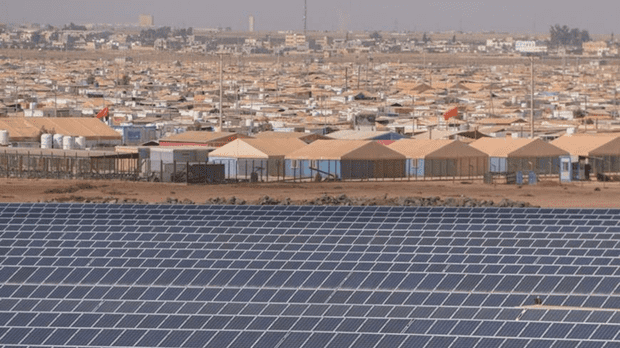The United Nations High Commissioner for Refugees (UNHCR) in Jordan has announced an innovative plan for the Zaatari and Azraq refugee camps, aiming to rely almost entirely on sustainable solar energy by the end of 2024. As per the recent data from the UN agency,~ 97 percent of the electricity needs in both camps will be met through solar power.
Solar power stations within the camps currently fulfill 60 to 70 percent of their electricity requirements, with the remaining 30 percent sourced from the national grid, which predominantly relies on carbon-based power stations. A pivotal agreement facilitates the transfer of green energy from a 46-megawatt solar power station in southern Jordan to Zaatari and Azraq refugee camps. Additionally, power generated from two solar power stations within the camps further contributes to this initiative, as reported by Al-Mamlaka TV.
This shift toward near-exclusive reliance on sustainable energy not only significantly reduces carbon emissions but also aligns with the UNHCR’s global commitments. Notably, in 2016, the Azraq camp became the world’s first refugee camp to be powered by renewable energy, boasting a 2-megawatt solar power station. Following suit, in 2017, the Zaatari camp, home to 84,314 refugees, inaugurated the largest solar power project of its kind in any refugee camp globally.
The Zaatari solar power generation station, with a construction cost of $17.5 million, operates at 12.9 megawatts and provides an annual saving of $5.5 million. Operational expenses, maintenance costs, and renewable energy replacement from southern Jordan are covered by the UNHCR, expecting a reduction in energy expenditure by 2024.
Jordan’s hospitality extends to hosting 55,426 registered Iraqi refugees and over 1.3 million Syrians since the onset of the Syrian crisis in 2011, including 649,091 registered Syrian refugees with the UNHCR. Until the end of last year, the UNHCR accounted for 723,886 registered refugees from all nationalities, excluding Palestinian refugees under UNRWA.


